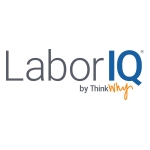Lagging Vaccine Rollout Contributes to Sluggish U.S. Job Growth

Slow start, though LaborIQ® forecasts economic acceleration in second half of 2021
DALLAS–(BUSINESS WIRE)–ThinkWhy, a SaaS company helping businesses navigate the labor market, released its national jobs report following an announcement from the Bureau of Labor Statistics that the economy lost 140,000 jobs in December, with the unemployment rate at 6.7 percent.
Job growth plummeted with 140,000 jobs lost in December, falling below the pace of employment growth experienced prior to COVID-19. The pandemic’s strain on the recovery of jobs was much more obvious in the Bureau of Labor Statistic’s latest report on the labor market. In the 12 months leading up to the pandemic, an average of 194,000 jobs were gained per month at the national level. Not only did job growth fall below that number, but it turned substantially negative. The 140,000 jobs lost in December 2020 was a clear indication that, until the virus is contained, there is a ceiling on the number of jobs that can be added back to the economy.
“LaborIQ® by ThinkWhy still expects job growth to accelerate in 2021, but December’s numbers confirm that any improvement will be sluggish as 2021 begins. The pace of vaccinations will continue to impact how fast the economy can recover,” said Jay Denton, Chief Innovation Officer and SVP of Business Intelligence for ThinkWhy.
Looking to the future, the U.S. still has 9.8 million jobs to recover from their levels before the pandemic. LaborIQ® by ThinkWhy projects that jobs will not be fully recouped until early 2023. The biggest storylines to watch through early 2021 are:
- Timing, efficacy and number of people who will get a vaccine
- Impacts to industries and locations based on tightening social restrictions to contain the virus, especially if the new strain spreads rapidly
- Policies from the new administration to keep businesses and consumers afloat
Why It Matters: Key Business Impact
“Today’s report will likely fuel calls for increased stimulus payments, rising from the current $600 to perhaps $2,000 under the new Congress. These payments are a useful band-aid to smooth consumer spending through Q1. But without an improvement in the virus environment, stimulus payments are unlikely to stoke employment growth. Employment will recover only when the virus situation is substantially improved, in Q2 or later,” said Marianne Wanamaker, labor economist and ThinkWhy executive advisory board member.
The nation is entering a period where more turbulence is likely. Some businesses, particularly those directly impacted by restrictions, will probably be in a holding pattern until more progress is made to reverse the virus’s trajectory. Other industries will simply need to continue to find strategic ways to maintain or gain traction during Q1 2021. Still, the expectation of a strong rebound on the other side of COVID-19 is the baseline. Until then, look for certain industries to remain much stronger than others.
With passage of the most recent stimulus legislation in Washington D.C., consumers got a boost in their ability to spend and an extension of protection from eviction. Notably, the bill extended benefits to part-time and gig economy workers who did not qualify for state unemployment insurance. Additionally, many small businesses should benefit from modifications that fund forgiveness of PPP loans as well as funds dedicated to some of the hardest-hit industries, such as those in arts and entertainment.
Despite the cloud of the pandemic, some businesses continue to thrive. Recruitment for the following types of businesses will likely remain more robust than for others through early 2021:
- Finance and insurance
- Home delivery services
- Grocery stores
- Computer equipment
- Utilities
- Housing construction
- Scientific research and development
TOP-RANKED LABOR MARKETS
LaborIQ’s proprietary ranking leverages 10 key variables to encompass the underpinnings of what makes a strong labor market for talent acquisition, including factors such as population growth, wage growth and educational attainment.
Out of 150 markets ranked, the following were the top five at the end of 2020:
- Dallas-Fort Worth-Arlington, TX
- Denver-Aurora-Lakewood, CO
- Boise City, ID
- Charlotte-Concord-Gastonia, NC-SC
- Tampa-St. Petersburg-Clearwater, FL
Though the rate of vaccination will continue to impede progress, LaborIQ® forecasts the labor market to be back to pre-pandemic level by the first half of 2023. Several industries are poised to recover faster, while a few others could lag the 2023 timeframe by up to two years. This projection is based on moderate job growth during this year’s fall and winter seasons, followed by stronger, more sustainable job growth beginning in mid-2021.
Recruiters and corporate talent acquisition professionals should prepare for robust hiring during the second half of 2021.
To read the full report, click here.
About LaborIQ by ThinkWhy
LaborIQ® by ThinkWhy is a breakthrough technology providing talent acquisition professionals with data-driven solutions to grow their bottom line.
Our talent tech helps win candidates – and clients – with the most precise market analysis and salary answers for over 20,000 job titles, across all U.S. cities and industries. LaborIQ’s employment reporting and forecasts, talent supply and demand, compensation benchmarking, and custom reporting tools deliver a competitive advantage in talent acquisition.
Learn more at www.ThinkWhy.com or follow us on Twitter and Instagram at @ThinkWhy_, on Facebook at @ThinkWhyLLC and LinkedIn at @ThinkWhy-LLC.
Contacts
Defne Karabucak
646-989-8138
dkarabucak@kwtglobal.com
KWT Global for ThinkWhy
646-989-8171
thinkwhy@kwtglobal.com
